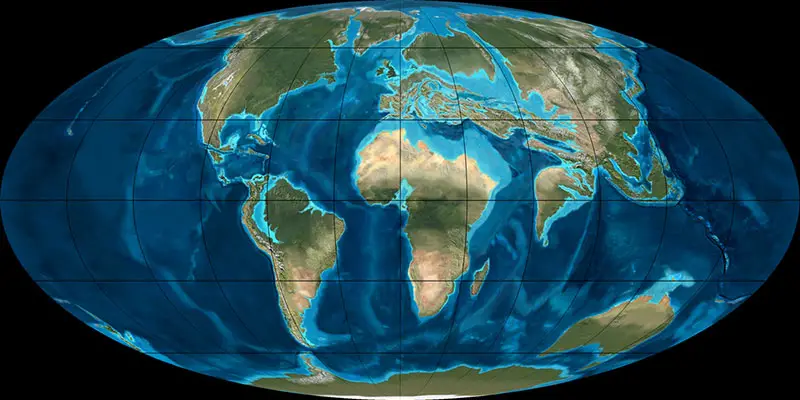†Wailekia (Sivaladapidae)
Wailekia ist eine Primatengattung innerhalb der Familie Sivaladapidae, deren 2 Mitglieder ab dem frühen Paläogen (Eozän) im Priabonium lebten, das vor ungefähr 38 Millionen Jahren begann und bis vor 33,9 Millionen Jahren andauerte. Viele Überreste wurden in Thailand gefunden.
Wailekia ist der Gattungsname einer ausgestorbenen Primatenart aus dem späten Eozän Thailands, die man zur Unterfamilie Hoanghoniinae, Familie Sivaladipidae (Ordnung Adapiformes, Strepsirrhini) zählt.
Der einzige Vertreter ist Wailekia orientale
Wailekia orientale
Das Typusexemplar trägt die Bezeichnung TF 2632, ein rechter Unterkiefer mit zwei Backenzähnen (M2-3). Aufgrund der Morphologie des Fundes schätzt man das Gewicht dieses kleinen Primaten auf 2,0 Kilogramm (Fleagle, 1999).
| Sammlung | Kommentar zum Fundort | Epoche, Alter | Geologie, Formation | Kommentar zur Sammlung |
|---|---|---|---|---|
| Bang Mark pit (small lignite bed) | Krabi Basin B2 | Krabi Mine | ||
| Kommentar z. Stratigraphie | Lithographie | |||
| from the "main lignite seam" in the Krabi mine that also yielded the Wai Lek pit fauna; small lignite bed located about 20 m above the top of the main fossiliferous lignite layer | "lignite" |
| Physiologie | |
|---|---|
| Gewicht: | ? |
| Schwestertaxa | |
Literatur
S. Ducrocq, J.-J. Jaeger, Y. Chaimanee, V. Suteethorn 1995, New primate from the Palaeogene of Thailand, and the biogeographical origin of anthropoids. Journal of Human Evolution. 28, p. 477 - 485Y. Chaimanee, O. Chavasseau, V. Lazzari, A. Euriat, J.-J. Jaeger 2013, A new Late Eocene primate from the Krabi Basin (Thailand) and the diversity of Palaeogene anthropoids in southeast Asia. Proceedings of the Royal Society B. 280, p. 20132268 - 485, DOI: 10.1098/rspb.2013.2268
